#14th century Italian art
Text
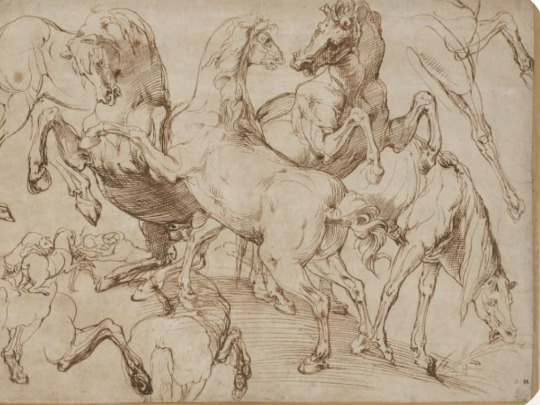
Perino del Vaga (Italian, 1501-1547)
Italian painter and draughtsman of the High Renaissance/ Mannerist period.
#drawing#Perino del Vaga#italian artists#Italian art#inked line drawings#drawings of horses#14th century Italian art#high renaissance#mannerist
1 note
·
View note
Text

Entry of Christ into Jerusalem, Pietro Lorenzetti, ca. 1320
#Palm Sunday#Holy Week#liturgical calendar#art#art history#Pietro Lorenzetti#Middle Ages#medieval#medieval art#Gothic art#International Gothic#Sienese Gothic#religious art#Biblical art#Christian art#Christianity#Catholicism#New Testament#Gospels#Trecento#Italian art#14th century art#fresco#Basilica of San Francesco d'Assisi
397 notes
·
View notes
Photo

Allegory of Good and Bad Government (allegory of peace) by Ambrogio Lorenzetti (Italian, c.1285--c.1348)
322 notes
·
View notes
Text

Et voila! I know you’ve all been waiting for it 🤭🤭
#byzantium#byzantine empire#byzantine empress#theodora palaiologina#anna of savoy#maria of trebizond#nicaean empire#empire of nicaea#13th century#14th century#15th century#history art#digital art#pride#lesbian#trans pride#pride art#greek tag#roman tag#italian tag#german tag#rus tag#bulgar tag#outremer#hungary tag#armenia tag#france tag
10 notes
·
View notes
Text

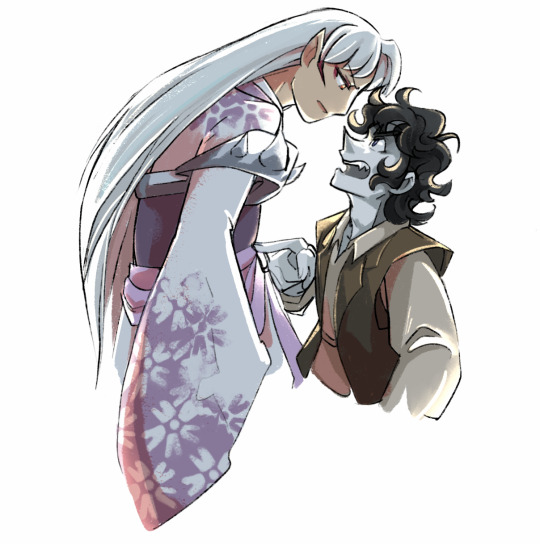


Sometimes your silly OCxcannon pair from middle school remains a comfort pair after all those years. I thought there is a possibility that someone other than me and close friends would get a kick out of my recent Sesshomaru X Renoir (my oc) arts.
#my art#my ocs#sesshomaru#not gonna put this in the inu tag bc i don't want to clog it#the bottom left one is a parody manga cover i made to amuse myself.. it still cracks me up#i like angry and quiet asshole x mean clown asshole pairs#anyway follow ur dreams because my art of them from high school for sure did not look this good#Renoir has his own story with my other ocs of course but he very much has an origin of 'made to be pitted against smug bastards'#renoir who idealizes humans while hating supernatural things (while he is one) clashing with someone prideful of what they are is nice..#why is there a 14th century italian vampire running around in feudal japan? don't think about it. i'm here to be indulgent
9 notes
·
View notes
Text
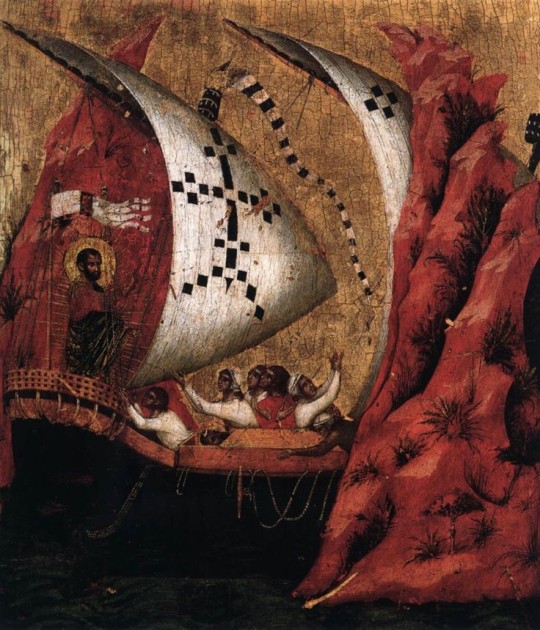
Translation of the Body of St Marc, 1345 by Paolo Veneziano, tempera on wood 58x42 cm, Basilica di San Marco
,
8 notes
·
View notes
Text


Combining Gowther’s (generalized) and my (fixation on historical clothing) autism swag rather than write my short phrase outline.
#I decided that since Seven Deadly Sins is post ‘Holy Wars’ that it’s late 13th to early 14th century inspired#which meant I unfortunately couldn’t justify the heels (16th century)#all in all Gowther came out very Italian of all things#the colors where also fun becasue I got to color pick hand dyed traditional European wool#my art#gowther
18 notes
·
View notes
Text
Highlights From a Recent Visit to the Museum of Fine Arts, Boston


Jean Baptiste Armand Guillaumin (French, 1841-1927) Bridge in the Mountains • 1887 • oil on canvas
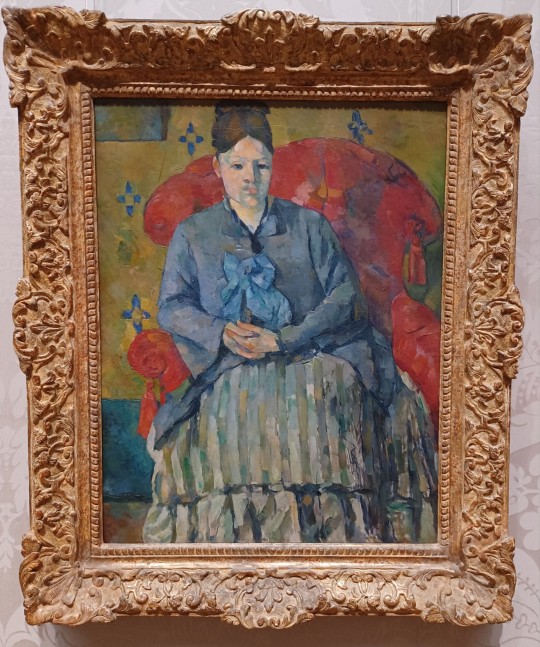
Paul Cézanne (French, 1839-1906) • Madame Cézanne in a Red Armchair • c. 1877 • oil on canvas

Gustave Caillebotte (French, 1848-1894) • Les dahlias, jardin du Petit Gennevilliers • 1893 • oil on canvas

Giuseppe Maria Crespi Italian (Bolognese, 1665-1747) •
Woman Tuning a Lute • c. 1700-05 • Oil on canvas

Joseph Mallord William Turner (English, 1775-1851)
Slave Ship (Slavers Throwing Overboard the Dead and Dying, Typhoon Coming On), 1840 • Oil on canvas
At first glance, a dazzling sunset distracts from the confusion and terror in the foreground of this painting. Its lengthy title alludes to an atrocity, probably the 1781 incident of the slave ship Zong. The ship's crew murdered 132 sick and dying enslaved Africans by throwing them overboard to collect insurance money for those "lost at sea." The resulting outcry galvanized abolitionism in Britain.

Paul Signac (French, 1863-1935) • Antibes, The Pink Cloud • 1916 • Oil on canvas
In a 1916 letter to a critic, Signac annotated a sketch of this "portrait of a cloud" to reveal the cloud's "personalities." He referred to the vaporous form at upper left as Loïe Fuller-an American dancer who had taken Paris by storm in the 1890s-and pointed out "some Michelangelesque figures" in the dark underside of the cloud at right. Signac called the German gunboats in the lower right corner "the black squadron."

Paul Signac (French, 1863-1935) • Port of Saint-Cast • 1890 • Oil on canvas
Port of Saint-Cast is one of a series of four seascapes that Signac painted along the coast of Brittany in northwest France.

Eugène Louis Boudin French (1824-1898) Fashionable Figures on the Beach • 1865 • Oil on panel

Carlo Crivelli (Italian [Venetian]), c. 1430/35-c. 1495
Lamentation over the Dead Christ, 1485 • Tempera on panel
With its gilding and elaborate patterning, this painting feels like a precious object. The raised decoration and the dimensionality of the forms heighten the intensity of Jesus's suffering. John the Evangelist's mouth stretches wide in grief, while the Virgin Mary's face bears the agony of losing her son. The perspective encourages the viewer to look up at the dead Christ, just as Mary Magdalen does while supporting his body. The fruits and vegetables hanging above, lush and full of life, have specific meanings, but together they remind the viewer that Christ will soon be resurrected. Crivelli, a master of pairing ornamental splendor with emotive power, has signed and dated the painting along the stone ledge.
Photo credit: ©Pagan Sphinx Photography
#art#painting#fine art#art history#religious painting#divisionism#jmw turner#carlo crivelli#boudin#guiseppe crespi#paul signac#french artist#french painter#italian artist#renaissance art#19th century art#eugene guillaumin#14th century art#british artist#armand guillaumin#paul cezanne#paul cézanne
2 notes
·
View notes
Text
I wanna rb that post i made ab "imagine criticising art without knowing basic french" but i'm still cross with you all for assigning me shu kinnie on it /lh
#but i mean it i feel like a knowledge of various languages depending on what art you're studying is important#if you're gonna study about like 17th-19th century literature in europe you have to be able to understand just basic french#and honestly yeah 18th-20th i'd say some german would help too#obviously 14th-16th-maybe17th italian would help#you know what i mean? bc the arts are a collective activity at least on the scale of a continent before globalisation#and various eras had different ''centres''#like the futurism manifest was written by an Italian but in Paris bc Paris was the artistic and cultural centre of Europe at the time#i mean i'm saying all this bc if you just separate gesamtkunstwerk you'd know what it means. total-art-work
6 notes
·
View notes
Text
Giotto di Bondone, “Lamentation of Christ”, 1305
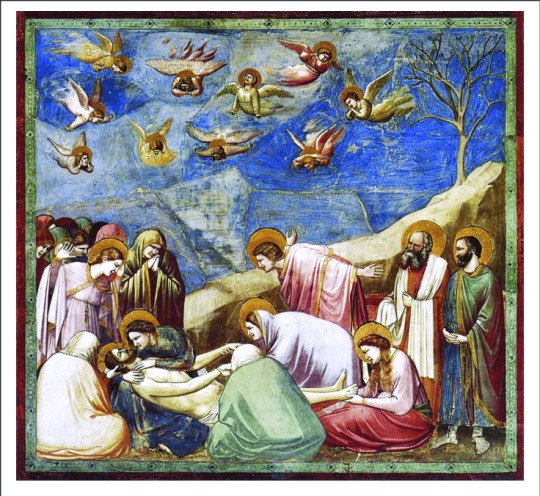
0 notes
Text
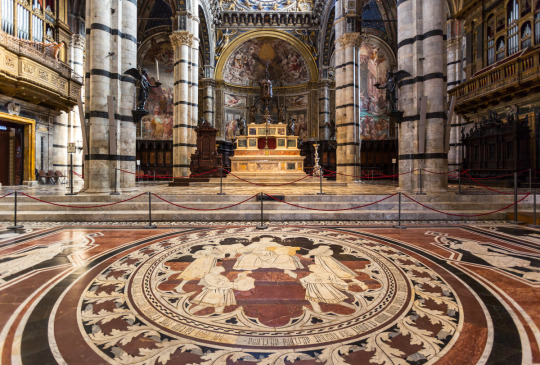


Those traveling to Siena this summer can get a glimpse of one of the northern Italian city’s most astonishing sights.
At the Medieval Duomo di Siena cathedral, in addition to the many works of art that adorn the church’s interior and exterior, visitors will be able to see nearly 14,000 square feet of intricate mosaic marble flooring dating back to the 14th century.
76 notes
·
View notes
Text

St. Michael and the Dragon, unknown artist of the Sienese School, 14th century
#art#art history#Middle Ages#medieval#medieval art#religious art#Christian art#Christianity#Catholicism#St. Michael#Archangel Michael#dragon#dragons#Sienese School#International Gothic#Italian Gothic#Italian art#Trecento#14th century art#tempera on panel#National Museum of Western Art
386 notes
·
View notes
Text
How the Renaissance Shaped the Italian Language
The Renaissance, a period of immense cultural, artistic, and intellectual growth in Europe, played a crucial role in the development of the modern Italian language. This era, spanning the 14th to the 17th century, witnessed a revival of interest in the classical art, literature, and learning of ancient Greece and Rome, significantly influencing the evolution of the Italian language.
Dante Alighieri's Contribution:
Dante Alighieri, often referred to as the "Father of the Italian language," was instrumental in establishing the Tuscan dialect as the standard for the Italian language. His most famous work, "The Divine Comedy" ("Divina Commedia"), written in the early 14th century, was one of the first major works of literature written in the vernacular, i.e., the local Tuscan dialect, instead of Latin. Dante's choice of the vernacular over Latin marked a pivotal moment in the development of Italian as a literary language.
Dante's works demonstrated the expressive and aesthetic possibilities of the Italian language, elevating its status and proving it could be used for serious, high literary pursuits, a domain previously reserved for Latin.
Petrarch's Influence:
Francesco Petrarca, known as Petrarch, further solidified the use of the vernacular in literature. He is best known for his Italian sonnet sequences, which focused on themes of love, personal reflection, and the human experience. Petrarch's poetry, particularly his "Canzoniere" (Songbook), greatly influenced Italian literature and language. His refined use of the vernacular and his development of the Italian sonnet format set a standard for lyrical poetry in Italian.
Boccaccio's Contributions:
Giovanni Boccaccio, another key figure of the Italian Renaissance, also contributed significantly to the development of the Italian language. His most famous work, "The Decameron," is a collection of novellas written in the vernacular. It not only had a profound impact on Italian literature but also helped to shape the Italian language by demonstrating its suitability for both serious and more lighthearted, secular topics.
Impact on Standardizing Italian:
The works of these authors were essential in the standardization of the Italian language. Their choice of the Tuscan dialect, particularly that of the Florentine region, as their literary medium contributed to its status as the basis of standard modern Italian.
Legacy and Continued Influence:
The Renaissance's focus on humanism and the return to classical sources also played a role in shaping the Italian language. This period encouraged a deeper exploration of the human condition, emotion, and intellect, aspects that were deeply integrated into the Italian language through literature and art.
In sum, the Renaissance was a period of reawakening that not only rediscovered the riches of classical antiquity but also set the foundation for the development of the modern Italian language. The works of Dante, Petrarch, and Boccaccio were not just literary masterpieces but also linguistic milestones that established the prestige and potential of the Italian vernacular, leading to its evolution into the modern Italian language we know today.
#italian language#learning italian#italian linguistics#renaissance#italian#italian literature#italian culture#romance languages#learning latin#latin linguistics#latin language#roman#italy#italian landscape
32 notes
·
View notes
Text
Schiaparelli’s ‘Inferno’: A journey to Hell and back
I’ve always wondered if today’s self-absorbed creative directors and edgy designers at the leading luxury fashion houses based in Paris are familiar with George Santayana’s cutting observation that, “Fashion is something barbarous, for it produces innovation without reason and imitation without benefit.” On the evidence of this year’s Paris Fashion Week I think not.
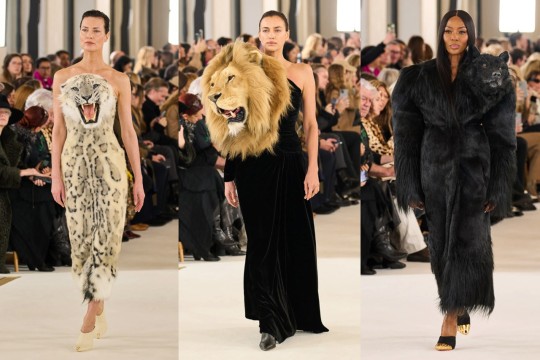
For the Spring 2023 collection at Paris Fashion Week, Schiaparelli creative director Daniel Roseberry revealed in pre-show notes that he was specifically drawn to Dante Alighieri’s magisterial Divine Comedy. He was especially inspired by Inferno, the 14th-century Italian poet’s renderings of Hell. Present as spectators and models were some of the internet’s favourite muses, such as Kylie Jenner wearing taxi-dermied outfits with hyperrealistic faux animal heads affixed to a fitted gown.

The singer Doja Cat was also there, appearing bald and covered in red gemstones at the steps of the Petit Palais like a demonic red figure. In other pieces, gold-painted torsos and metallic sculptural heads paid tribute to the house’s founder, Elsa Schiaparelli, and her ties to Surrealist artists like Man Ray, Salvador Dalí, and Meret Oppenheim during the 1930s. She was the subject of a recent retrospective at the the Musée des Arts Décoratifs in Paris last year in 2022, and her collaborations with those artists demonstrated a propensity to shock audiences with strange garments that at times merged human bodies with animal features.
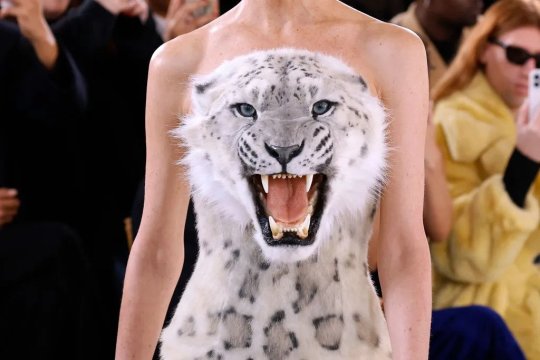

Throughout the haute couture show, Roseberry brought to life versions of Dante’s epic poem’s three allegorical animals: the lion, the leopard, and the she-wolf. Accordingly he dressed three super models, Shalom Harlow as the leopard, Naomi Campbell as the she-wolf, and Irina Shayk as the lion. All three haute couture dresses were sculpted and embroidered by hand, “celebrating the beauty of nature and guarding the woman who wears it” said the proud creative director.
When I read that particular remark I almost choked on my tea. I was sitting in a nearby Parisian café with my younger sister, who was visiting me in France, and one of our French-Nordic cousins who actually works in the luxury brand corporate world as a senior exec in LVMH. Through our cousin we had managed to see one or two of the fashion shows last week. It’s not really my cup of tea, but I gave in to indulge my visiting sister and my cousin who loves her job.
Many people outside of haute couture world of Paris Fashion Week, focused on the spectacle of cruelty of seeing three stuffed animal heads on the bosoms of three super models strutting on a fashion show runway. Most of the criticism was misplaced as it showed little understanding what a haute couture show is all about. It allows the talented designer to let his/her hair down and show off their most off the wall ideas, and above it’s meant to be playful.
That said, I, however, was focused on what Daniel Roseberry actually said of his collection. I thought it was a misquote but no, as it turned out later, it’s what the designer said.
I resisted the urge to feel ‘offended’ and to look around for a pitch fork to join the unruly easily offended mob to denounce the designer. To me it wasn’t about the Surrealist heritage of Schiaparelli that the creative director drew inspiration from for one part of his show - that’s what one might expect from that fashion house. Nor was it the animal depiction on dress gowns that was pretty par for course for any haute couture fashion show - which I personally found garish and in bad taste - but which drew the public outcry against the perception of animal cruelty.
No, it was the crime of cultural vandalism against Dante himself.

I have no idea if Roseberry has actually read the Dante’s Divine Comedy or not but from his remarks that his hideous creations were “celebrating the beauty of nature and guarding the woman who wears it” he clearly hadn’t or was high as a kite on drugs and high energy drinks.
So I’m going to discuss Dante’s three wild beasts as Dante wrote them.
In the opening Canto of the Divine Comedy, Dante encounters three ferocious animals: the leopard, the lion and the she-wolf.

In the first canto of the Inferno, Dante, having gone astray in a dark wood, reaches the base of a sunlit hill (later described by Virgil as “the mountain of delight, the origin and cause of every joy”) and begins to climb - only to find the way blocked by three beasts. First, a leopard appears.
And almost where the hillside starts to rise -
look there! - a leopard, very quick and lithe,
a leopard covered with a spotted hide.
He did not disappear from sight, but stayed;
indeed, he so impeded my ascent
that I had often to turn back again.
It is a spring morning, and “the hour and the gentle season” give Dante “good cause for hopefulness” upon seeing the leopard - but then he sees a lion.
but hope was hardly able to prevent
the fear I felt when I beheld a lion.
His head held high and ravenous with hunger -
even the air around him seemed to shudder -
this lion seemed to make his way against me.
When the third beast appears, Dante gives up hope entirely.
And then a she-wolf showed herself; she seemed
to carry every craving in her leanness;
she had already brought despair to many.
The very sight of her so weighted me
with fearfulness that I abandoned hope
of ever climbing up that mountain slope.
. . . I retreated down to lower ground.
When you read Dante - in Italian or in translation - nothing you read ever so simple and nothing should be taken at face value. Indeed in the Divine Comedy almost nothing is said without good reason. Take the verse preceding the appearance of the three beasts.
When I had rested my body there a while
I then started again up the barren slope
the more powerful foot always behind the other
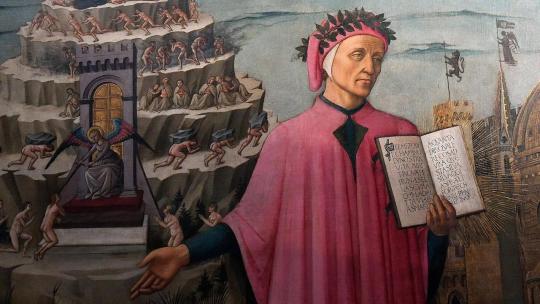
Dante refers to the manner of his climb. He makes the climb with ‘the more powerful foot always behind the other’. One foot (the more powerful) is always behind (lower than) the other. This is a difficult line to interpret. It could of course simply be a description of how someone climbs a hill. You plant one foot in the ground and then push up allowing the other foot to 'land' and secure your position.
If Dante is talking about a stronger (firmer) foot and (presumably then) a weaker foot and talks about the one being lower than the other, there is probably a deeper meaning behind it. In Dante's thought world it was sometimes said that in the 'pilgrimage' towards heaven, we walk on two 'feet' (or legs); the Will and the Intellect. Because the Will, the stronger of the two, is always desiring what it shouldn't, our journey forward towards God is therefore hampered. We limp our way to heaven! So Dante could be saying that his Will lags behind his Intellect as he strives to find the light of God, making his journey up those slopes that much harder. The (weaker) Intellect is having to drag the (stronger) Will upwards towards the divine light.
An alternative explanation is inspired by a comment from St Augustine to the effect that 'love is the foot of the soul', in other words the driving force of the soul's quest for God. So, Dante could be suggesting that his stronger foot (love) pushes his body up the hill towards God. Personally I prefer this more optimistic image of his ascent; after all, he begins his climb in hope and anticipation.
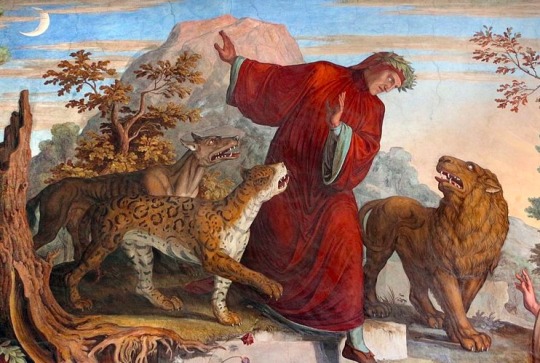
And so we have to ask ourselves as we come to the three beasts, is there a deeper meaning to these animals beyond their physical power and scariness. Yes, there is.
When Dante engages with myths throughout his Inferno, he’s also leaning into this tradition of animals as allegories. He’s striving to teach a lesson, as mythical creatures punish sinful souls for eternity. Invoking creatures from antiquity, Dante’s Inferno moulds pagan hell into a Christian design. These mythical creatures are behemoth reminders for potential sinners about the consequences of their actions.
Even from the opening canto of Dante’s Inferno, we find our titular character lost in a dark and winding wood. As the woods darken, he feels his consciousness enter a strange state - a feeling that he likens to death (Inferno 1.7). As this shroud covers him, Dante encounters the first mythical creatures in the Divine Comedy.
Leopards and lions were not native to Italy. Travellers relayed tales of these beasts to illuminators and scribes, and information about them would be published in bestiaries. Leopards were often incorporated into coats of arms when there were descendants of adultery in a lineage. The leopard Dante encounters is “very quick and lithe” (Inferno, 1.32). Perhaps the leopard is meant to symbolise a sin associated with impatience or hubris. Lions were often symbols of Christ, akin to Aslan in the Chronicles of Narnia but in this case the lion was “ravenous with hunger” (Inferno 1.46), which may have been a reminder to the reader about the dangers of gluttony.
The importance of animals goes beyond face value. Animals appearing in stories always contain allegories. The beasts symbolised the major categories of sin: incontinence, violence and fraud. Or as they are more commonly called - lust, pride and avarice. In her commentary, Dorothy L. Sayers explains that these categories of sin were associated with the three stages of life - lust with youth, pride (self-conceit) with the middle years and avarice with old age. Of course, they can attack a person at any time of his life.
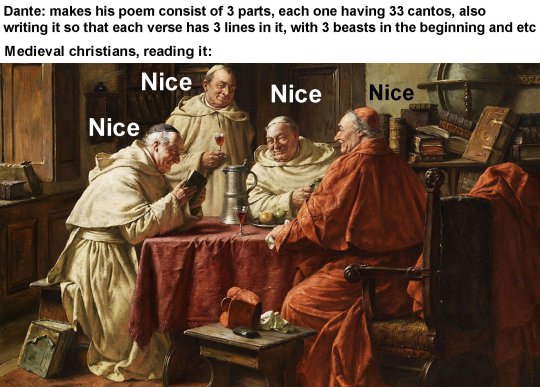
Symbolism can help us enormously when reading Dante but it is also important I think to try to read the text itself and take clues from the way Dante uses the symbols. The Leopard is mesmerising, clever, quick and very pleased with itself, displaying its gaudy spots for all the world to see. The Lion terrifies even the air around it with its appearance (and presumably its roar) but the most noticeable thing about it from Dante the pilgrim's point of view is how proud it is as it hold its head up high. The third beast, the she-wolf, is one that has brought grief to many people. Her leanness speaks of an insatiable appetite; no matter how much (or how many people!) she eats she never thrives, never grows fat, she is never satisfied.
If Dante's world each of the beasts represented different vices or sins - the leopard as a symbol of lust, the lion a symbol of violent pride and the she-wolf as a symbol of avarice and fraud - then these could also either represent Dante's own besetting sins which prevent him from reaching heaven, or perhaps the three levels of hell which are divided according to the kind of sin committed. In the first circle Dante the pilgrim will find those guilty of avarice and incontinence (not the bowel kind), in the second circle sinners guilty of violence and in the third, those responsible for crimes of treachery and fraud.
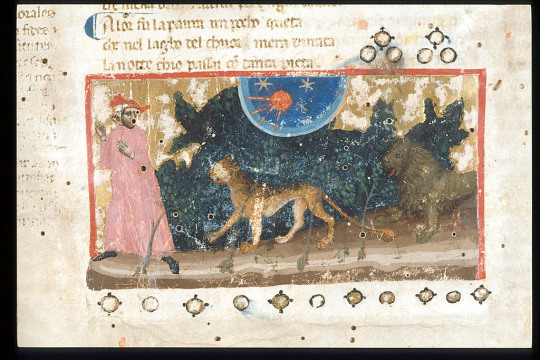
It’s easy to see then these animals as symbols of divine judgement on Dante. Dante is not ready to find the divine light. He is still under judgement. His sins have not been dealt with and as we shall learn, only by descending to hell and rising through the mountain of purgatory will he be able to find that light as a 'saved' soul.
All three wild beasts are mentioned in the bible and used as symbols of the kind of fate that will befall the people of God as divine judgment.
In Hosea 13:4-8 God says that he will be like a lion and a leopard (and an angry mother bear!) towards his ungrateful, apostate people.
In Jeremiah 5.1-6, Jeremiah fails to find one godly (just) person in the city of Jerusalem. Failing to do so God promises that judgement will come like this:
Therefore a lion from the forest will attack them,
a wolf from the desert will ravage them,
a leopard will lie in wait near their towns
to tear to pieces any who venture out,
for their rebellion is great
and their backslidings many. (NIV)
If indeed the wild beasts represent the judgement of God in the Old Testament through Hosea and Jeremiah, in the New Testament they take another form entirely. And this may well have played a part in Dante’s thought. It is entirely possible that Dante is thinking of the Apostle Paul's reference to 'fighting wild beasts in Ephesus' (1 Corinthians 15.32). Of course Paul didn't mean he actually wrestled lions and wild beasts. He meant that dealing with those who opposed him there was just like being a gladiator in the arena fighting lions and bears. And the people who opposed him were the institutions of Ephesus, the city authorities, the trade guilds, the business leaders.

Dante the pilgrim, following in the footsteps of the Apostle struggles with his own 'wild beasts'. the wild beasts who had plotted against him, and exiled him from his native city in 1302. Dante the pilgrim walks in the footsteps of Paul. He also walks in the footsteps of Christ who was alone in the wilderness with the wild beasts for 40 days and 40 nights. Although the the original intention of the gospel writers may have been to conjure up the impression of a restored Eden, for Dante those accounts would have conjured up the idea of conflict and danger.
Like Paul and like Christ, Dante the pilgrim has to struggle with ferocious animals in his journey towards God, just as Dante the writer has had to in his journey.
Who or what then are these forces, these wild animals who prevented Dante from finding the true path? Interestingly these animals were all prized in one way or another in Dante's native Florence.
There is evidence that a leopard and a number of lions were kept and publicly displayed in cages in Florence in Dante's day near what is today the Loggia del Bigallo, as a sign of Florence's power and prestige.

The lion was also part of Florence's coat of arms. Scholars have noted that Dante was familiar with the writings of Richard of St Victor who had associated the leopard with the sins of deceit and fraud. The lion was associated in medieval bestiaries with the sin of avarice (because of its apparently insatiable hunger) as well as with pride. These are 'civic sins' as much as personal vices.
Was it Florence's avarice and pride that was in the front of Dante the writer's mind when he described the leopard's gaudy spots and the lion with its head held high? Is it perhaps the city that had turned against Dante and thrown him out to live a life of exile that prevents the progress of the pilgrim towards paradise?
The she-wolf is the most daunting beast of all. She proceeds terrifyingly, step by step stalking forward, threatening and relentless. Dante comments:
The very sight of her so weighted me
with fearfulness that I abandoned hope
of ever climbing up that mountain slope.
. . . I retreated down to lower ground.
Surprisingly perhaps it is the she-wolf, not the leopard or the lion that finally causes the pilgrim to despair. Wolves were considered to be symbols of fraud and deceit as well as sexual immorality and prostitution.

In his hugely influential work The City of God, St Augustine had commented that in his time prostitutes were known as she-wolves and a brothel was known as a 'wolf den'. He suggested that this verbal link gave rise to the famous origin myth of Rome, according to which the two twins Romulus and Remus, the offspring of the god Mars and the their mother (whom he had raped) Rhea, were abandoned to die but were saved and suckled by a she-wolf. Augustine suggests that instead, they were found and fed by an unknown prostitute i.e. by a 'she-wolf'. From this play on words came the legend that it was a literal she wold who found and fed them. In the City of God (Book 18 chapter 21) Augustine writes as follows:
“Procas ruled before Aemulius. Now Aemulius had made his brother Numitor's daughter, named Rhea, a Vestal Virgin; she was also called Ilia, and was the mother of Romulus. The Romans wish to say that she conceived twins by Mars; for, in this way, they honoured, or excused, her unchastity. They offer as proof of this the legend that, after their exposure, the infants were suckled by a she-wolf. For they hold that this species of animal belongs to Mars; and so, therefore, the she-wolf is believed to have offered her teats to the little children because she recognised in them the sons of Mars, her master.
There is, however, no lack of people who say that, when the exposed infants lay wailing, they were first taken in by some unknown whore, and that hers were the first breasts they sucked - for ‘she wolves’ (lupae) was the name given to whores, which is why houses of ill repute are even now called ‘wolfouses’ (ilupanaria). Afterwards, it is said, they came into the care of a shepherd called Faustulus, and were nurtured by his wife Acca. And yet if, in order to convict the man who was king, and who had cruelly commanded that these infants be cast into the water, God willed to help the children through whom such a great city was to be founded, and to have them rescued from the water by His divine intervention and suckled by a wild animal: is there anything very wonderful in this? “
- Translated by W. Dyson (Cambridge Texts in the History of Political Thought)
So, according to Augustine, it wouldn't be surprising if God had supplied a real she-wolf to find and feed the abandoned babies, because God is merciful and just, but in fact the stories he has heard suggest a different explanation. Namely that it was a human 'she-wolf', a whore, who had found them.
It is also interesting that Augustine links the god Mars with the story. The wolf, he says, is one of Mars' own creatures' i.e. a beast with a special affinity to Mars. Is it relevant that the city of Florence had adopted Mars as its own patron 'star'? It may also be relevant that the name of the Guelf faction, some of whom had ordered Dante's expulsion from Florence, was linked to the German word for wolf (Welf). Dante's enemies in Florence were 'wolves'. It seems the clue lay in the name.
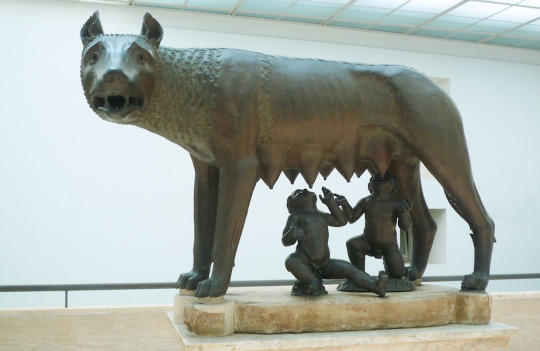
But it may not have been only Florence Dante wanted to suggest to readers' minds. In addition it seems that by the time Dante wrote the Divine Comedy the Papal Curia had adopted as its own symbol the famous statue of Romulus and Remus suckling from the mother she-wolf on the Capitoline Hill. The she-wolf was of course the defining myth of Rome’s founding. Several ancient sources refer to statues depicting the wolf suckling the twins. Livy reports in his Roman history that a statue was erected at the foot of the Palatine Hill in 295 BC. Pliny the Elder mentions the presence in the Roman Forum of a statue of a she-wolf that was "a miracle proclaimed in bronze nearby, as though she had crossed the Comitium while Attus Navius was taking the omens". Cicero also mentions a statue of the she-wolf as one of a number of sacred objects on the Capitoline that had been inauspiciously struck by lightning in 65 BC: "it was a gilt statue on the Capitol of baby being given suck from the udders of a wolf." Cicero also mentions the wolf in De Divinatione 1.20 and 2.47.
The Capitoline Wolf was widely assumed to be the very sculpture described by Cicero, due to the presence of damage to the sculpture's paw, which was believed to correspond to the lightning strike of 65 BC. The 18th-century German art historian Johann Joachim Winckelmann attributed the statue to an Etruscan maker in the fifth century BC, based on how the wolf's fur was depicted. It was first attributed to the Veiian artist Vulca, who decorated the Temple of Jupiter Capitolinus, and then reattributed to an unknown Etruscan artist of around 480 - 470 BC.
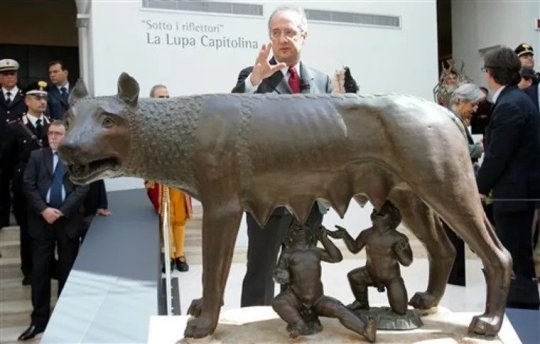
So for centuries The Capitoline Wolf was almost universally recognised as an Etruscan statue from the early part of the 5th century BC. It was only in 2006 that an Italian art historian and restorer, Anna Maria Carruba, published a detailed critique against the accepted view. She argued that the bronze had been cast with a method unknown in classical times, and that marks left by the artist on its surface were more typical of the Middle Ages. Barely a year later in 2007, Rome’s top archaeologist and heritage advisor, Prof. Adriano La Regina, reported that over 20 tests using radiocarbon and thermoluminescence dating don at the University of Salerno suggested that the wolf portion of the statue may have been cast between 1021 and 1153. Overnight one ancient Rome’s oldest artefacts became one of city’s youngest.
Given the pride and place of this famous statue, The Capitoline Wolf, given by the Church of Dante’s time, it adds an extra dimension to any reading Dante’s words about the she-wolf. For the wolf, the creature of Mars, the symbol of Rome and now of the church was a big thing in 13th century Italy. It is this beast that scares Dante the most, that strips away his hope and forces him to turn around. It is this beast he says which has been ‘the despair of many’. It is not a surprise then to find that throughout the Inferno he likens various damned souls to wolves.
Again the bible may have played a part in his thinking Jesus warned his disciples to watch out for the false prophets, the wolves who come dressed in sheep's clothing. Ithink it’s too much of a stretch to say it was a direct attack on the church or the papacy of Boniface VIII but it does lend credence to the possibilities of personal corruption for those in the church who flirted with earthly temptations and sins - the very sins that destroyed souls and blocked humanity’s upward path to heavenly salvation.

For Dante there was no distinction between the inner and the outer person or between the individual and social. The individual did not live a life apart from his or her wider life in the state and in the church. Sin was something that affected everything and everyone. These beasts may well represent sin or vices with which Dante the writer was only too familiar in his own experience but to me it seems highly likely that they represent above all the forces he saw around him which, in his mínd, prevented people finding the beauty and love of God. The Apostle fought his wild beasts in Ephesus. Dante fought his in Florence.
The mythical figures featured in Dante’s Inferno lean on a long tradition of animals as allegory. As Dante journeys through the realms of the afterlife, these beings can lend a helping hand on the long and winding road through hell, purgatory, and heaven. While the creatures of the Inferno intend to scare sinners straight, they themselves also suffer as the embodiment of their respective sins.
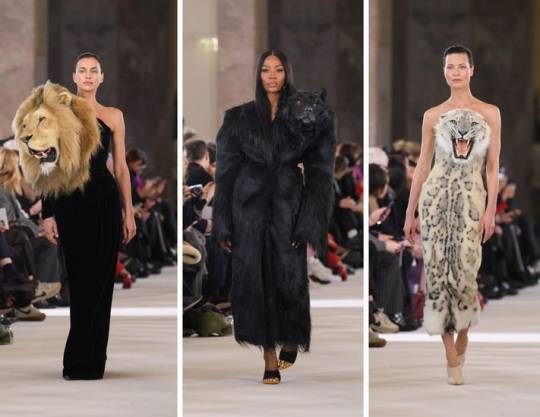
While hell is where sinners languish, it remains a complex and captivating place. Dante filled his entire Divine Comedy with bizarre creatures from across literature, and they serve a similar purpose to any beast in a story: to distill morals or a lesson. Their presence makes the story memorable, even for modern readers like us today.
Dante’s Inferno brings readers on a journey through hell, replete with allegories from across time like sitting through a hellscape of a Schiaparelli haute couture fashion show during Paris Fashion Week. As time wears on, Inferno’s wild beasts offer captivating perspectives on our very modern sins of lust for affirmation, pride in our self-centredness, and an avarice for material comfort.

But I don’t wish to end on a downer because Dante is not a pessimistic poet. Most readers never proceed beyond the macabre thrills of Dante’s ‘Inferno’, with its grotesquely inventive torments. Those who do ascend from the “Inferno” find some of Dante’s most lyrical verse in his ‘Purgatorio’. But it is the least-read of the three books, ‘Paradiso’, that makes sense of the other two. It shows, Dante was not just a poet of crisis, but also a poet of hope:
The ‘Divine Comedy’ is that rarest thing, an epic poem with a hopeful ending. It is about getting a second chance - and ultimately finding joy, a Christian understanding of joy in the light of God’s saving grace.
#essay#dante#dante alighieri#divine comedy#commedia#italian#poem#epic#literature#christian#christianity#church#bible#history#schiaparelli#paris fashion week#paris#paris fashion week 2023#shalom harlow#naomi campbell#irina shayk#supermodels#daniel roseberry#sin#fashio#clothes#haute couture#lion#leopard#she wolf
87 notes
·
View notes
Text
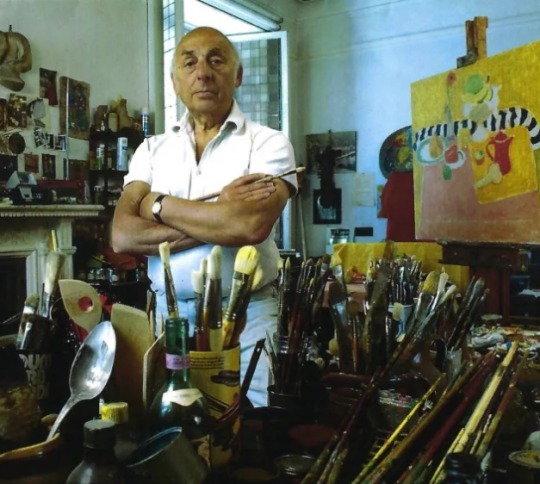

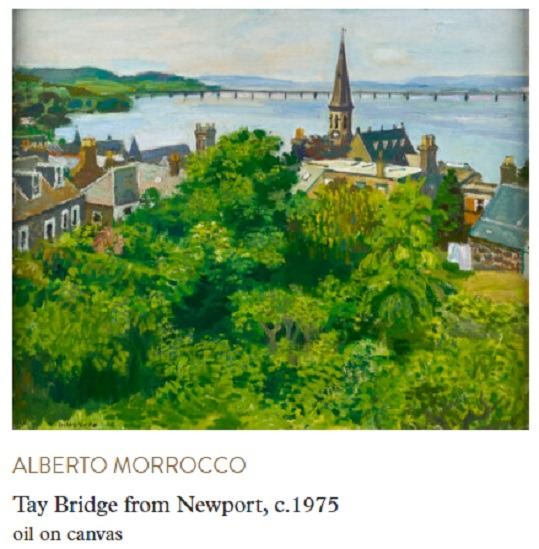


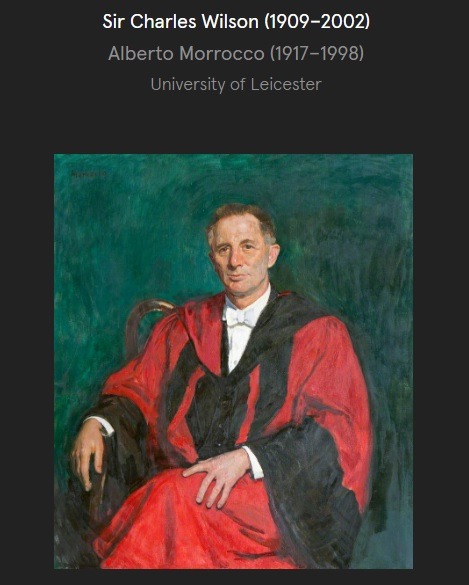

On March 10th 1998, Alberto Morrocco, the Scottish painter noted for his murals and portraits in oil and watercolours, died.
Alberto Morrocco was born on 14th December 1917 in Aberdeen to Italian parents in 1917. He attended Gray’s School of Art from the prodigious age of fourteen, tutored by James Cowie and Robert Sivell, and won the Carnegie and Brough travelling scholarships, affording him opportunity to paint and study in France, Italy and Switzerland in the late 1930s.
After serving in the army between 1940-46 he devoted his time to painting. His subject matter varied from the domestic interior, landscape, imaginings of Italian life, still life and many commissioned portraits. Combining his talent with abundant energy he became one of the most dominant figures in the Scottish artworld in the second half of the 20th century.
He participated in many group exhibitions both at home and abroad and works are held in major collections including: The Scottish National Gallery of Modern Art; Royal Scottish Academy; Scottish Arts Council; West Riding County Council; Newark on Trent Municipal Museum; Liliie Art Gallery, Milngavie, Glasgow; Robert Fleming Holdings Ltd; Vincent Price Esq, USA ; Icelandic Glasgow, Paisley, and Perth Art Galleries; he Universities of Aberdeen, Edinburgh, Dundee, Glasgow, Leicester, Stirling and St. Andrews; City of Art Centre, Edinburgh; Bank of Scotland. His work is to be found in private collections throughout Europe, the Far East and America.
13 notes
·
View notes
Text
Why Leonardo da Vinci is considered awesome - a Renaissance ramble
Okay so I'm gonna use the tendrils of what I remember from European and art history to expound on this guy with my recent photos from Italy - as well as Italian Renaissance art in general. Contributions and corrections very welcome.
(Since the pics are mine they're not the highest quality; Google the name and artist for any of these to find higher quality images if you'd like to see more details.)
The Renaissance is considered to have begun in the 14th century (1300s) in Italy and spread across Europe for the next 300 years from area to area. Renaissance, meaning "rebirth", was all about humanism with a huge emphasis on the growth of knowledge and the arts. While there is no set year for its start, I believe that most would agree that it largely took off after the Black Plague (mid-century) which killed about a third of the population of Europe, helping lead to the end of serfdom and an overall upheaval of societies across the continent.
In paintings up to the mid-late 14th century from Italy, you'll see very little representation of realistic art. Most of the figures appear more flat and there's no consistency in figure size and the like. It's not necessarily that artists were incapable of realistic drawing; it's rather that symbolism was significantly more important in medieval art, and everything from size to positioning had a meaning in these pieces. Realistic portrayal wasn't the goal.
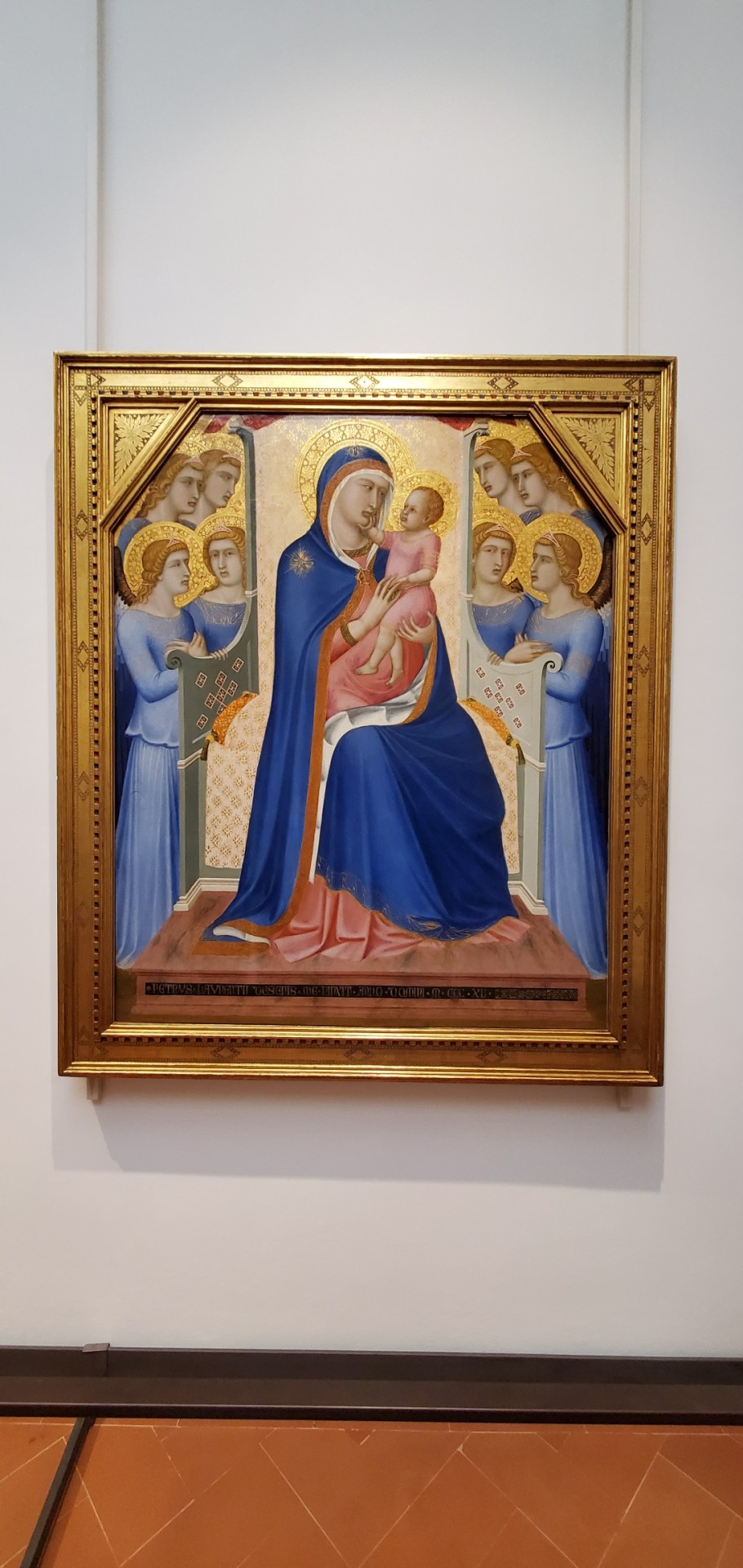
Virgin and Child enthroned, with angels / Pietro Lorenzetti (c. 1340)
The early Renaissance saw a change in this style. While symbolism was still important in many paintings during the Renaissance, they started to be incorporated in a realistic manner. The gold leaf backgrounds largely became a thing of the past and painted backgrounds entered the picture. With painted backgrounds entered the need for perspective.
Artists were definitely trying early on to paint these realistic backgrounds, but perspective is a formula with very specific rules, and without knowing those rules, you can't get the perspective right. You can see that below in this early Renaissance painting. Different parts of the wall appear to be going to different vanishing points and the proportions relative to distance and the height of the viewer aren't quite there yet.

Adoration of the Child with Saints / Filippo Lippi (c. 1455)
In the above artist's case, perspective was an item known by this time - Filippo Brunelleschi, the genius behind the enormous dome in the Cathedral in Florence - rediscovered it earlier that century, and his discovery was popularized by Renaissance architect Leon Battista Alberti, who published them in 1435 in a book for painters.
But this all leads up to Leonardo and artists of his caliber (such as Raphael). By the end of the 15th century and going into the 16th, the really talented artists knew the mathematical reasonings behind perspective and could accurately portray one point perspective in their works.
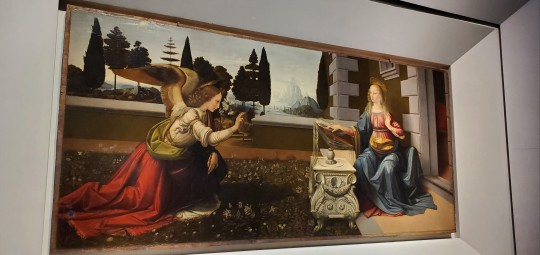
Annunciation / Leonardo da Vinci (c. 1472 - according to Uffizi. Some attribute it as late as 1476)
Leonardo was one of the early adapters - but he wasn't the only one, not at all. So why is he so well known?
Well, he's likely so well known due to the Mona Lisa being stolen from the Louvre in 1911 and hidden for two years. That helped Leonardo's name, already well respected in the art and history world, gain fame in popular consciousness. Further references to him in the later 20th century (such as the ever-popular Ninja Turtles) only helped further.
But why is he so respected in the world of history and art?
Leonardo was one of the first called a "Renaissance Man", a term that came from the Renaissance but has come today to be known as a "a person with many talents or areas of knowledge" (per Oxford). He was not only a painter and artist, but an engineer, scientist, theorist, sculptor, and architect. Something I learned on my trip to Italy is that when he first went to Milan (because there was too much competition in Florence!) he presented himself to Lord Sforza as an engineer rather than an artist. You can see this all throughout his writings, along with his musings on all the above subjects PLUS anatomy, astronomy, botany, cartography, and paleontology (thanks Wiki).
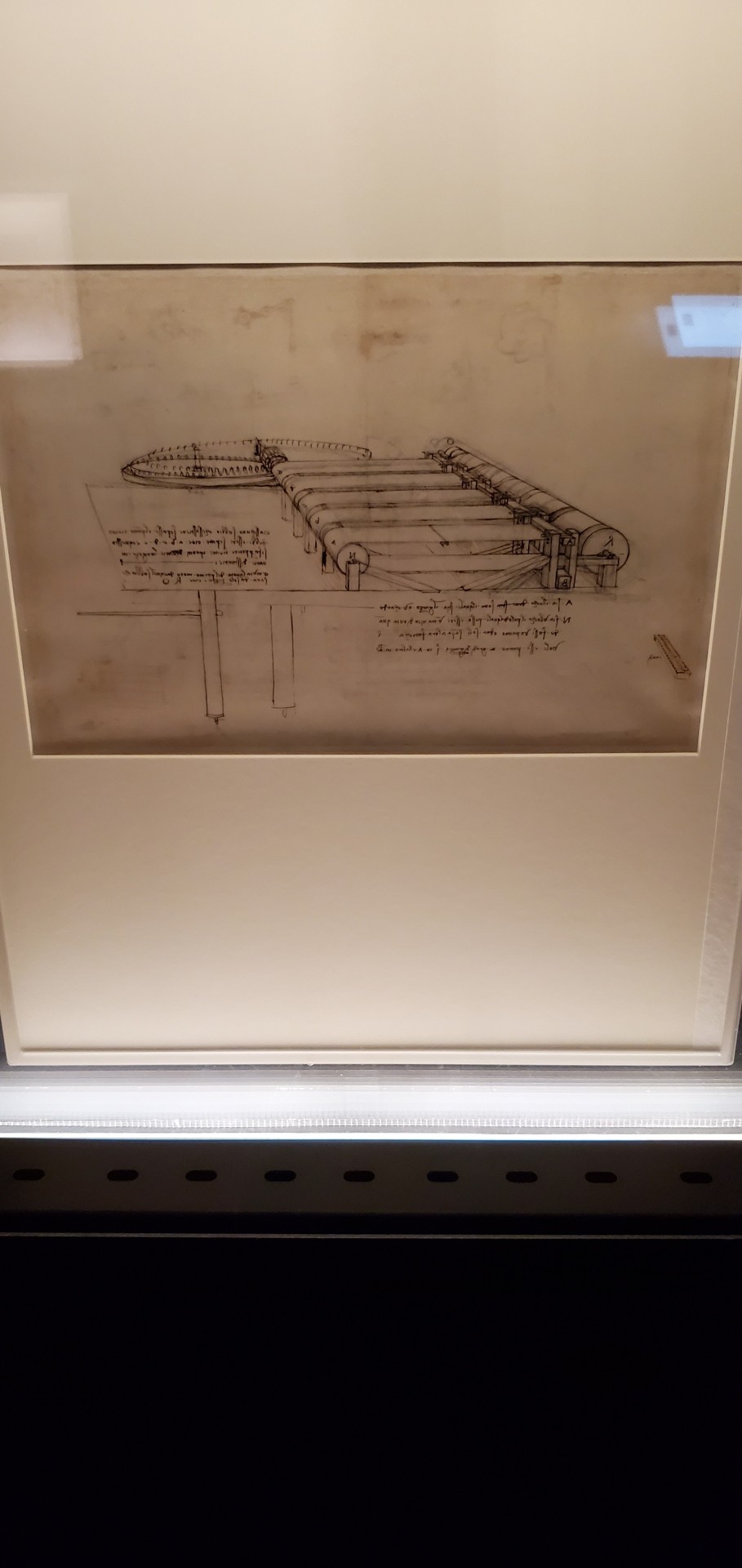

A couple pages from the Codex Atlanticus, one collection of his writings in Milan
Leonardo was so good at engineering that his detailed notes on a planetary clock that was in Chiaravalle Abbey during his time (and since destroyed in some fashion) has been recreated from his notes alone. And yes, it works. It's been recreated at least twice from what I can find, the newest one made by Dolce&Gabbana. This painter was so good at engineering that we have a working clock from it.

(Sadly, his inventing the airlock for winemaking seems to be fiction spread to tourists - earliest dates point to 19th century for that - but he certainly had a love of wine and his own vineyard).
But what I really really wanted to cover in this post was his skill as an artist compared with his contemporaries - and I don't think anything does this quite as well as The Other Painting on the Wall.
What other painting? It turns out that the large room in the Santa Maria delle Grazie that hosts The Last Supper actually holds another mural on the opposite wall.
Ladies and gents, meet The Other Painting.
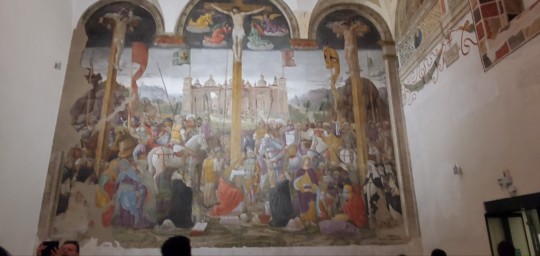
Crucifixion / Giovanni Donato da Montorfano (1495)
No one seems to know that this painting is in the same room. No one cares about it, either. In WW2, Milan was hit heavily and a third of the city was destroyed. They protected The Last Supper with a wall of sandbags to try and protect it from any bombing (and while one wall of the old monastery was indeed destroyed, it miraculously survived). Donato's painting? Wasn't even considered worth trying to protect.
And well, when you look at the two contemporary pieces together, you can see why this one has no fame. It's large and impressive, yes, but so are many paintings and frescos from that time period. There's a dime a dozen of them in Italy from the Renaissance. It's when you look at the details that you see the lack of depth.

Look at the mourner with blond hair and the purple and gold clothing, for instance. Consider the scene: Jesus, the one who they follow and believe to be their savior, is being killed in an absolutely horrific manner - and the expression on that man's face looks more like he's bummed out that his pizza burned in the oven. That's not anguish; it's mild disappointment.
You see that mild emotion in all the faces of the people around; fury is mere annoyance, grief is an inconvenience, and it certainly doesn't match the anguish even as the scene is written in the New Testament.
Now look across the room at the detail there. Even after its deterioration due to Leonardo's less than great experimentation with not-fresco materials, you can still see the clear confusion, anger, and disbelief in the apostles' faces when Jesus tells them that one of them is going to betray him.
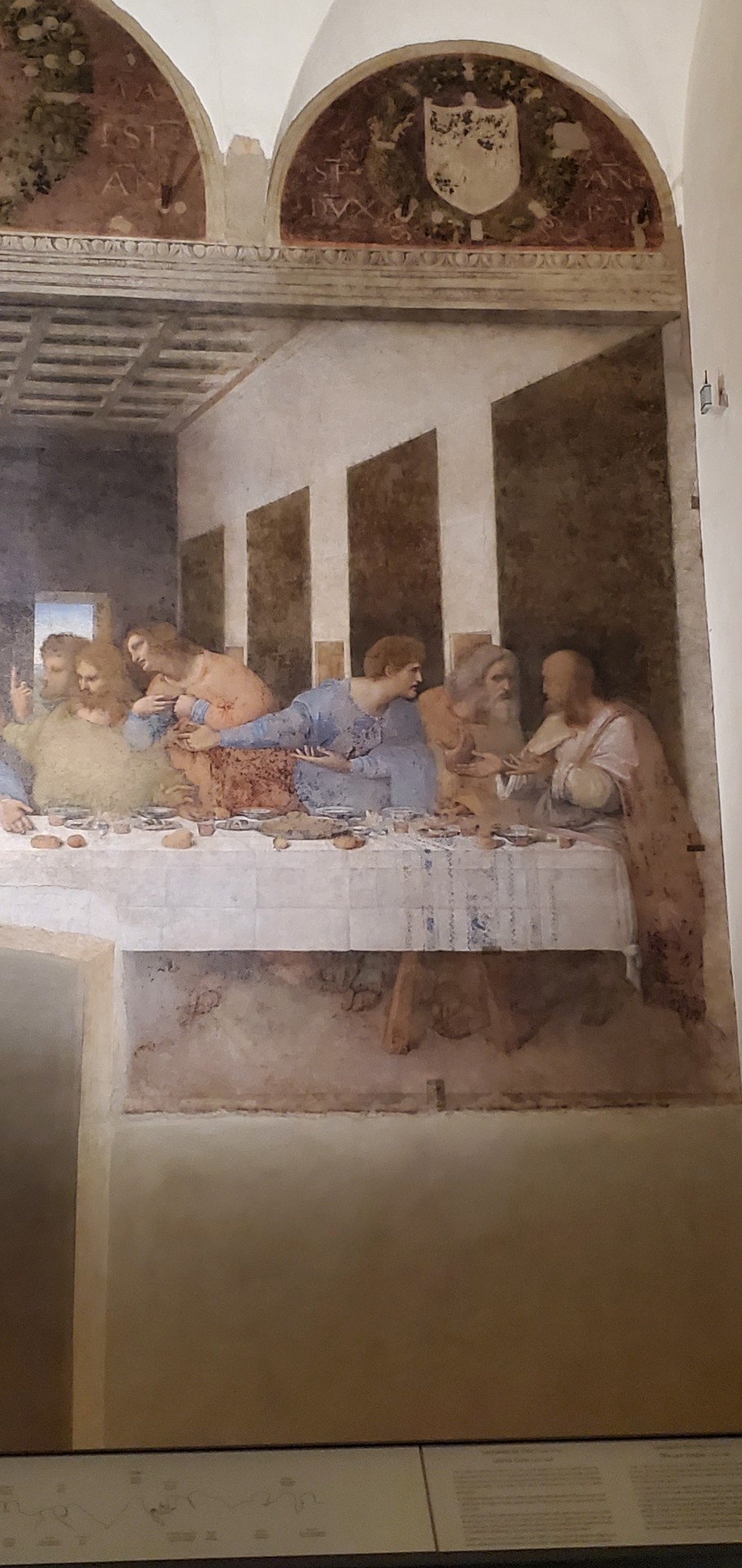
And these two frescos were created in the same decade.
Not only do you have the intense and all-too-human emotion in this work that the painting by Donato lacks, but you also have very subtle symbolism incorporated naturally into the painting with the Apostles all grouped in three (and indeed all the threes you can see in composition), Judas leaning down to be cloaked in shadow, and Jesus (as was common with these paintings) indicating with his hands to the Eucharist (the bread and wine).

The Last Supper / Leonardo da Vinci (c. 1495-8)
Being in the same room as both of these frescos, I can say with certainty that Leonardo deserves all the praise that he gets.
#italy#leonardo#leonardo da vinci#renaissance#art#art history#history#the more you know#i could go on for days about stuff like this
30 notes
·
View notes